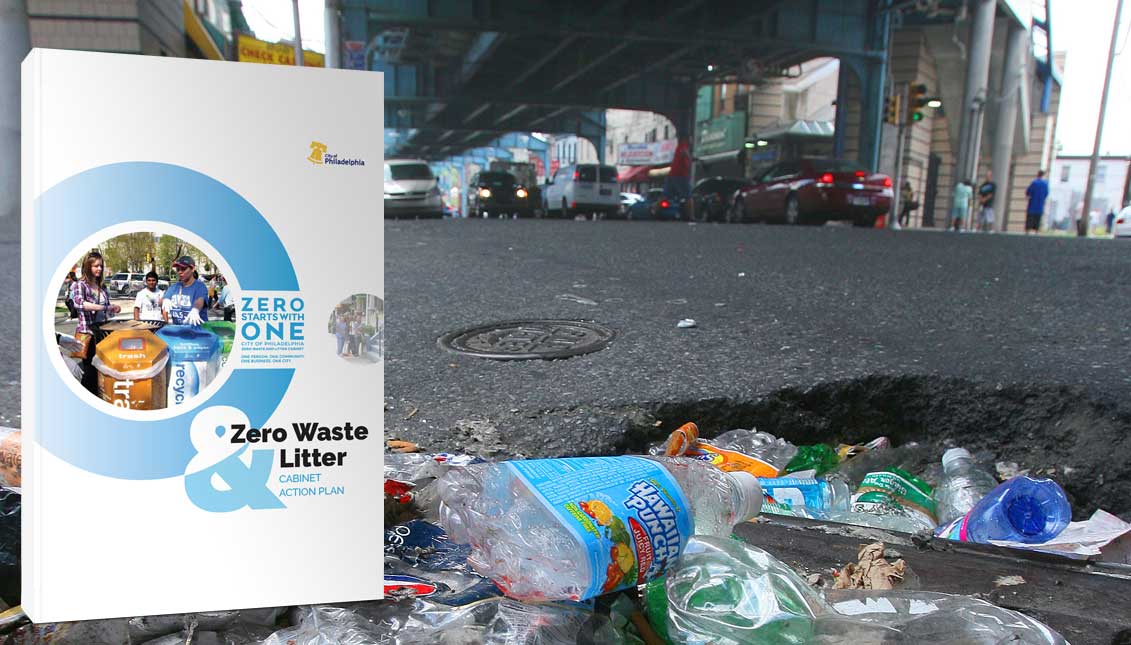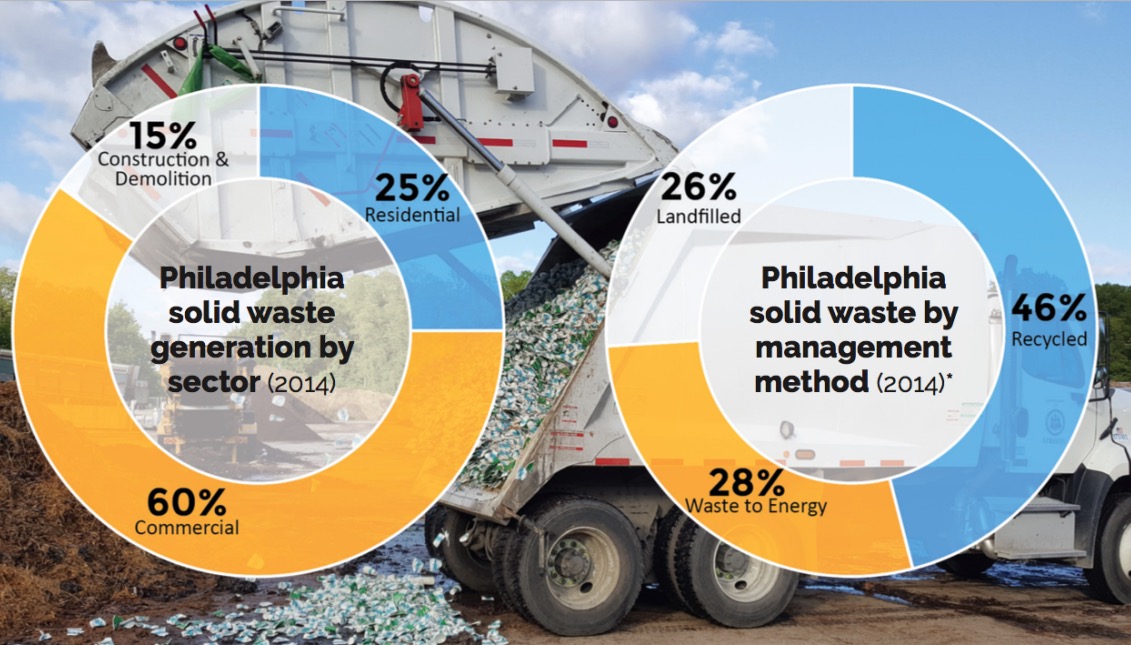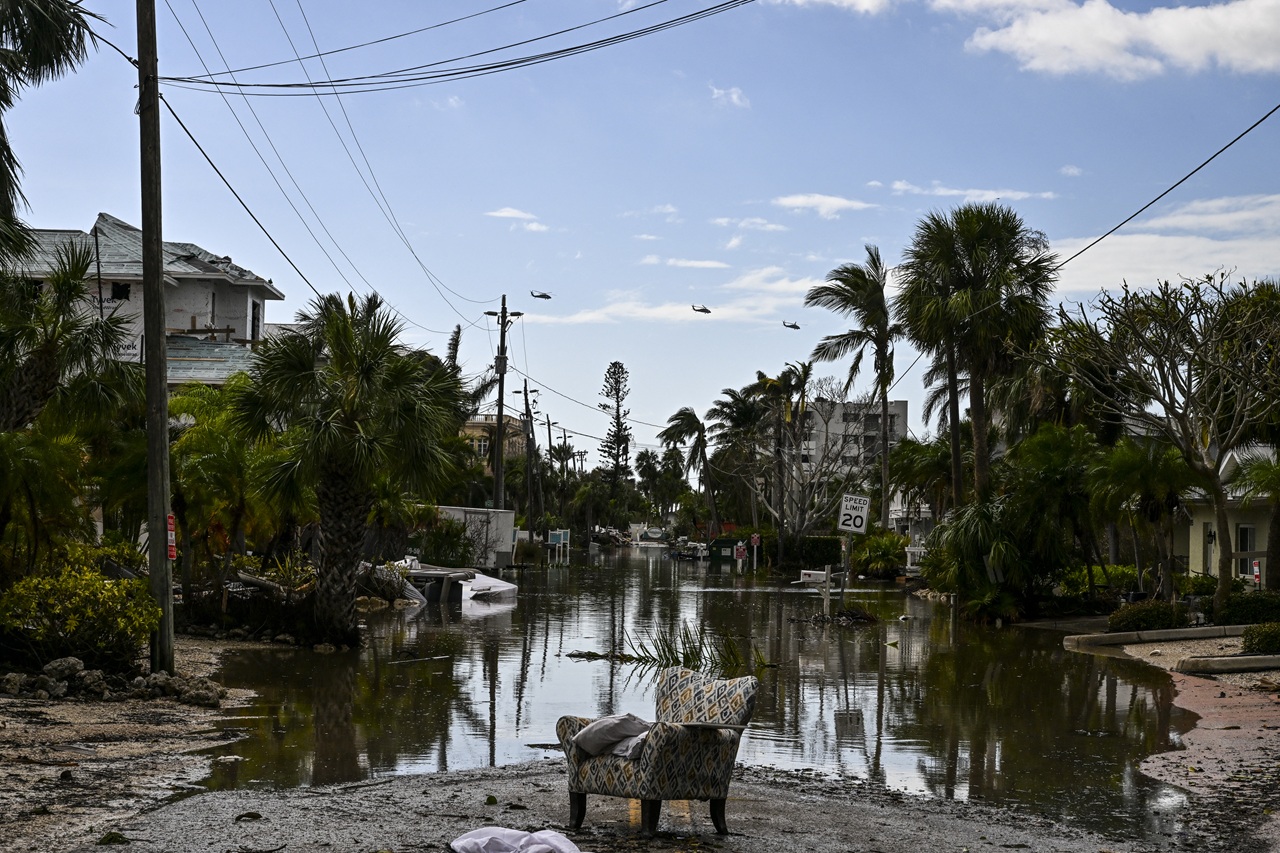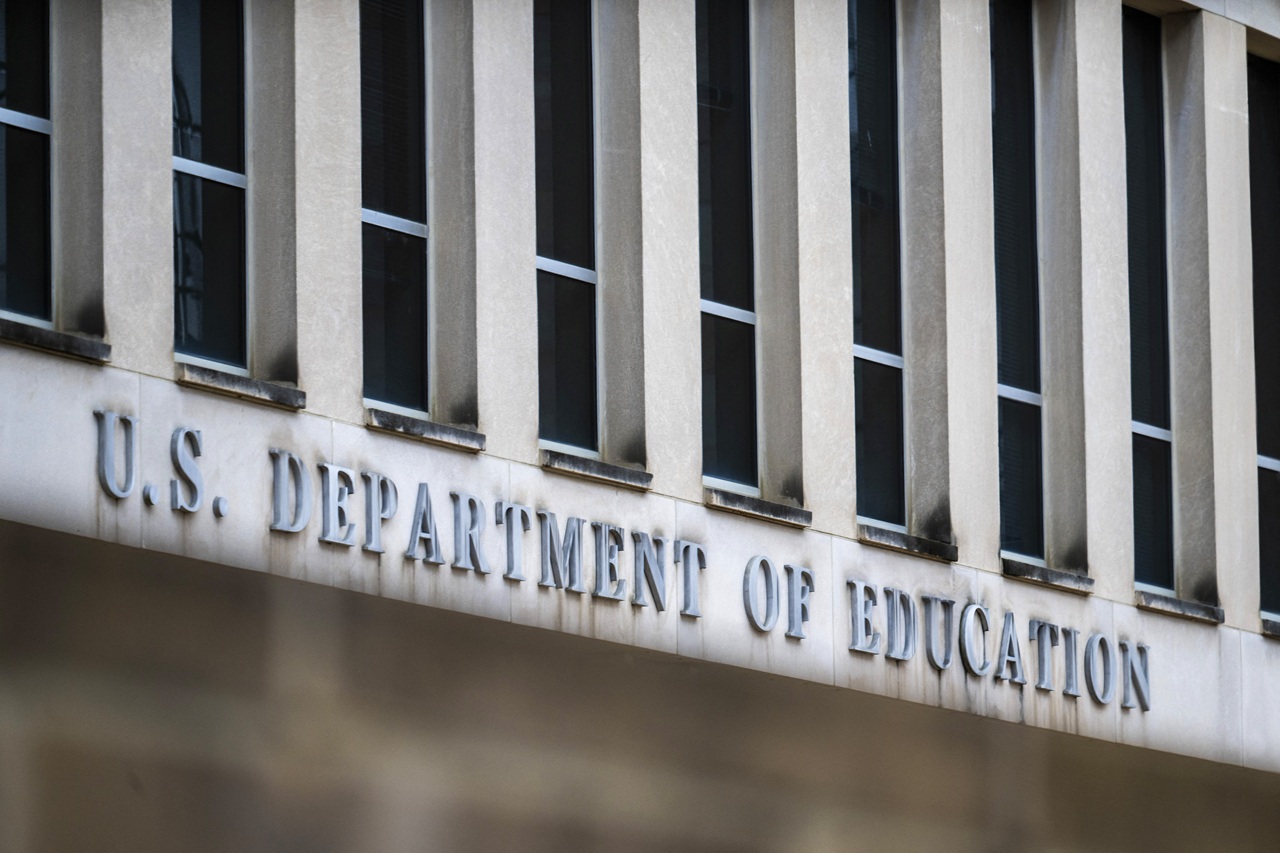
A Plan to Make Philly a 21st Century City
"Zero Waste" is the name of the strategy with which the mayor intends to revolutionize the way the city handles its waste, in 18 years.
Philadelphia is a dirty city. That is an indisputable fact.
There are zones where you literally walk on mountains of garbage, and you feel both pity and disgust.
According to official figures, the city produces 1.5 million tons of garbage a year, which equals one ton for every person who lives - and contaminates - here.
The fact that such a small city produces such a quantity of garbage suggests that its inhabitants have at least one serious problem of consumption - in addition to a bad civic and environmental behavior.
Although the city generally has a good system of waste reuse - it recalls 46 percent of its waste while another 28 percent is converted, by burning, into energy - 26 percent of these (390,000 tons) ends up rotting in landfills, thus contaminating the soil.

But that this reality is indisputable does not mean that it cannot be changed. This is precisely what the municipality proposes with its "Zero Waste and Litter Action Plan" a road map whose objective is to reduce the production of garbage, to increase the use of waste and to forever eliminate the burning or waste disposal in landfills. A complex effort from any point of view, because it compromises many parts and suggests a cultural revolution ... and it is not easy to articulate so many people.
The document focuses on five areas of work: reduction of waste and solid waste production, control of street garbage abandonment and cleaning of public spaces, data bank, behavioral science and communication.
The first task is the sustainable management and the use of solid and organic waste. The idea of the city council, on the one hand, is to implement programs and audits to ensure the recycling and reuse of 90 percent of solid waste produced in public and private buildings and cultural events. On the other hand, the idea is to invite citizens, community organizations and the private sector to adopt practices for the recovery of organic material to use as fertilizer in urban agriculture projects, parks and green areas.
RELATED CONTENT
The second task is more complex because it focuses on attacking a cultural problem whose roots are very deep and its multi-million dollar consequences: the abandonment of garbage and materials in lots and streets. Last year, the City's Life Improvement Program and the Department of Streets removed 13,125 tons of abandoned material in 1,049 lots in the city.
To put an end to this problem, the mayor will "combine all forms of struggle," which includes 31 recommendations to tighten punitive actions (fines, persecution and penalty) and implement other proactive approaches that involve citizens and community organizations.
Getting people to waste less in abandoned lots, and recovering public areas, would mean saving $ 8 million, which covers the removal of garbage in the past fiscal year.

The third front is has to do with knowledge management, which is nothing other than to do a strict monitoring and analysis of actions and critical points to apply correctives in the necessary cases. This would be done with the implementation of the Litter Index a software for mapping, measuring and classifying the conditions of pollution by trash abandonment in the city.
The fourth task starts from the premise that the municipal administration cannot dedicate itself exclusively to cleaning up the trash that people leave behind, but must understand the social, cultural and economic reasons that explain this behavior. This is intended to improve the design and implementation of public policies and communication with citizens.
The fifth task is focused on the communicative aspect. To this end, the Mayor created the CleanPHL.org website, where you can access information about different programs, resources and opportunities to facilitate the linking of anyone to the efforts to change the face of the city. It also includes access to real-time information on the classification of neighborhoods and streets, according to the pollution index, trash collection times, reception centers for materials and debris, among others.
With this plan, Philadelphia defines its map to remove the motto of "Filthadelphia" that accompanies it from 1919 and to become once for all - before 2035 - a sustainable city of the 21st century.











LEAVE A COMMENT: